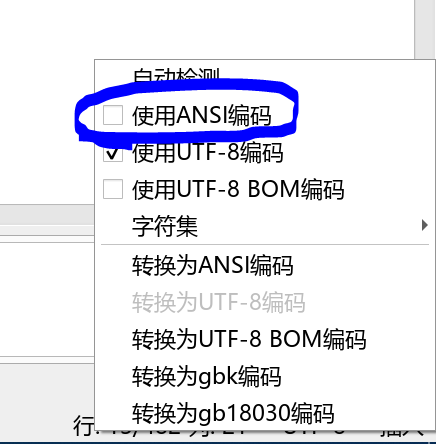想用cpp写一个http服务端在朋友面前装逼吗?这篇文章就给你一个基础的HTTP协议框架给你去写,不是0基础的哦
提醒
本篇文章写出的cpp程序无法跨平台编译运行,只能在Windows上运行,因为它使用了一些win的网络协议相关API库例如winsock2.h、 windows.h、ws2tcpip.h
创建基本的HTTP服务端框架
以下的cpp代码创建了一个监听端口(8080)的TCP服务器,并且当有新的连接请求时接受它们。然后,对于每个连接,先读取客户端发送的数据(即HTTP请求),并响应一个简单的HTTP消息作为回应。最后,关闭客户端连接(服务端是多线程的)
这个时候你可以在浏览器中输入http://127.0.0.1:8080或localhost:8080即可看到html页面,然后你就可以开始改cpp源代码中的html部分了
#include <winsock2.h>
#include <ws2tcpip.h>
#include <stdio.h>
#include <windows.h>
#include <bits/stdc++.h>
#pragma comment(lib, "Ws2_32.lib")
#define PORT "8080"
#define BACKLOG 5
DWORD WINAPI HandleClient(LPVOID lpParam) {
SOCKET clientSocket = (SOCKET)lpParam;
char buffer[1024];
int bytesReceived = recv(clientSocket, buffer, sizeof(buffer) - 1, 0);
if (bytesReceived > 0) {
// Null terminate the received data and print it out.
buffer[bytesReceived] = '\0';
printf("Received: %s", buffer);
const char* httpResponse =
"HTTP/1.1 200 OK\r\n"
"Content-Type: text/html; charset=UTF-8\r\n"
"Connection: close\r\n"
"\r\n"
"<html><body><h1>Hello World</h1></body></html>";
send(clientSocket, httpResponse, strlen(httpResponse), 0);
}
closesocket(clientSocket);
return 0;
}
int main() {
WSADATA wsaData;
int result;
result = WSAStartup(MAKEWORD(2, 2), &wsaData);
if (result != 0) {
printf("WSAStartup failed: %d\n", result);
return 1;
}
struct addrinfo hints, *res = NULL;
ZeroMemory(&hints, sizeof(hints));
hints.ai_family = AF_INET;
hints.ai_socktype = SOCK_STREAM;
hints.ai_protocol = IPPROTO_TCP;
hints.ai_flags = AI_PASSIVE;
result = getaddrinfo(NULL, PORT, &hints, &res);
if (result != 0) {
printf("getaddrinfo failed: %d\n", result);
WSACleanup();
return 1;
}
SOCKET ListenSocket = socket(res->ai_family, res->ai_socktype, res->ai_protocol);
if (ListenSocket == INVALID_SOCKET) {
printf("Error at socket(): %ld\n", WSAGetLastError());
freeaddrinfo(res);
WSACleanup();
return 1;
}
result = bind(ListenSocket, res->ai_addr, (int)res->ai_addrlen);
if (result == SOCKET_ERROR) {
printf("bind failed with error: %d\n", WSAGetLastError());
freeaddrinfo(res);
closesocket(ListenSocket);
WSACleanup();
return 1;
}
freeaddrinfo(res);
if (listen(ListenSocket, BACKLOG) == SOCKET_ERROR) {
printf("Listen failed with error: %ld\n", WSAGetLastError());
closesocket(ListenSocket);
WSACleanup();
return 1;
}
printf("Server started on port %s. Waiting for connections...\n", PORT);
while (true) {
SOCKET ClientSocket = accept(ListenSocket, NULL, NULL);
if (ClientSocket == INVALID_SOCKET) {
printf("accept failed: %d\n", WSAGetLastError());
closesocket(ListenSocket);
WSACleanup();
return 1;
}
// 创建新线程来处理客户端请求
DWORD ThreadID;
CreateThread(NULL, 0, HandleClient, (LPVOID)ClientSocket, 0, &ThreadID);
}
closesocket(ListenSocket);
WSACleanup();
return 0;
}
接收POST请求(html提交表单)
只需修改HandleClient函数即可
DWORD WINAPI HandleClient(LPVOID lpParam) {
SOCKET clientSocket = (SOCKET)lpParam;
char buffer[4096];
int bytesReceived = recv(clientSocket, buffer, sizeof(buffer) - 1, 0);
if (bytesReceived > 0) {
buffer[bytesReceived] = '\0';
printf("Received: %s", buffer);
// 检查是否是GET或POST请求
bool isPostRequest = false;
string request(buffer);
string method = request.substr(0, request.find(' '));
//判断是否是GET请求
if (method == "GET") {
const char* httpResponse =
"HTTP/1.1 200 OK\r\n"
"Content-Type: text/html; charset=UTF-8\r\n"
"Connection: close\r\n"
"\r\n"
"<html><head><title>输入框示例</title></head>"
"<body>"
"<form action='/submit' method='post'>"
"<label for='userinput'>请输入内容:</label><br><br>"
"<textarea id='userinput' name='userinput' rows='4' cols='50'></textarea><br><br>"
"<input type='submit' value='提交'>"
"</form>"
"</body></html>";
send(clientSocket, httpResponse, strlen(httpResponse), 0);
}
else if (method == "POST") {
// 处理POST请求
size_t contentLengthPos = request.find("Content-Length: ");
if (contentLengthPos != string::npos) {
size_t endLinePos = request.find("\r\n", contentLengthPos);
int contentLength = stoi(request.substr(contentLengthPos + 16, endLinePos - contentLengthPos - 16));
// 获取POST数据
string postData = request.substr(request.find("\r\n\r\n") + 4, contentLength);
cout << "POST Data received: " << postData << endl;
// 解析表单数据
string key, value;
size_t equalsPos = postData.find('=');
if (equalsPos != string::npos) {
key = postData.substr(0, equalsPos);
value = postData.substr(equalsPos + 1);
// URL解码(简单示例)
replace(value.begin(), value.end(), '+', ' ');
for (auto& ch : value) {
if (ch == '%') {
ch = '?'; // 简化处理
}
}
// 将数据保存到文件
saveToFile(value, "user_input.txt");
// 返回成功响应
const char* httpResponse =
"HTTP/1.1 200 OK\r\n"
"Content-Type: text/html; charset=UTF-8\r\n"
"Connection: close\r\n"
"\r\n"
"<html><head><title>提交结果</title></head>"
"<body><h2>感谢您的提交!</h2>"
"<p>您提交的内容已保存至文件。</p>"
"<a href='/'>返回首页</a>"
"</body></html>";
send(clientSocket, httpResponse, strlen(httpResponse), 0);
}
}
}
}
closesocket(clientSocket);
return 0;
}如何解决网页的乱码问题
直接把编码改成ANSI即可,但cpp的命令行显示中文会乱码
先教到这里吧,下次再弄)




































































































































